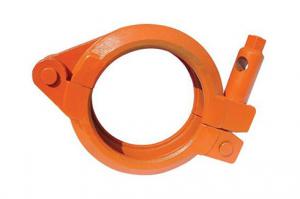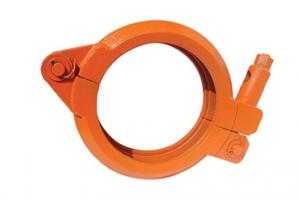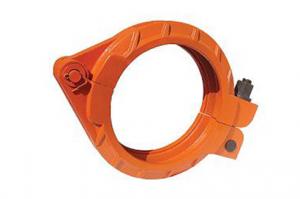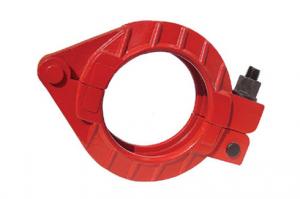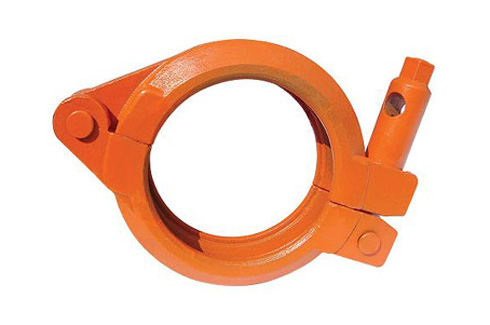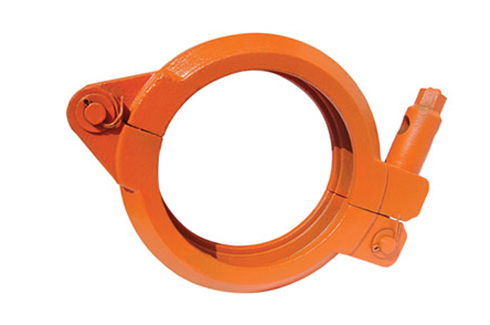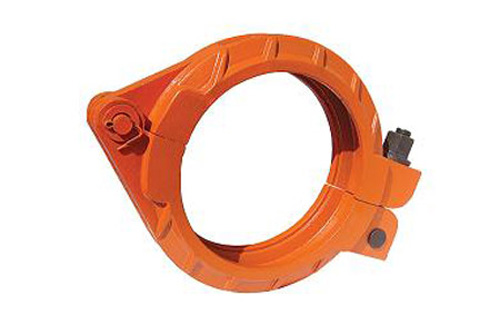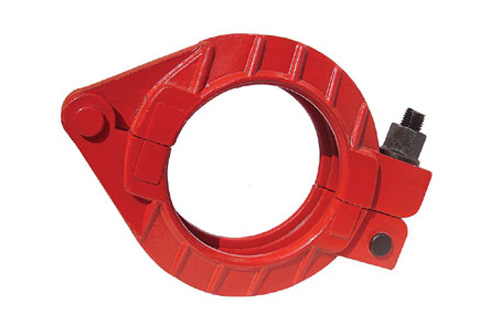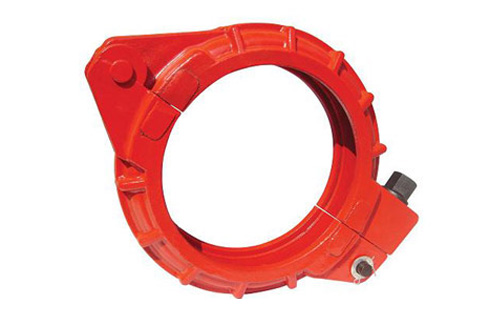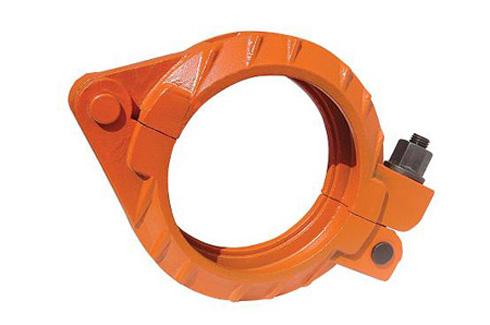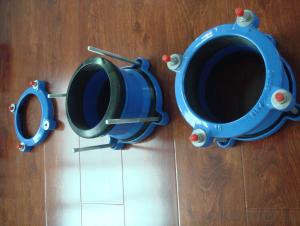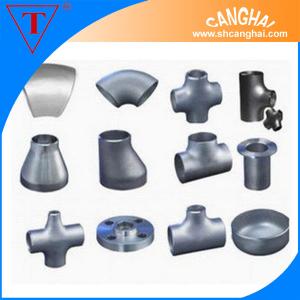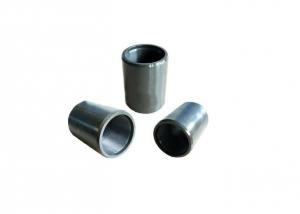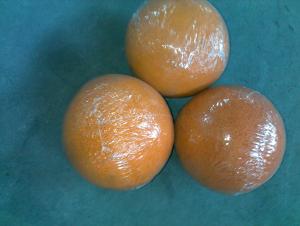Pipeline Coupling
- Loading Port:
- China Main Port
- Payment Terms:
- TT OR LC
- Min Order Qty:
- -
- Supply Capability:
- -
OKorder Service Pledge
Quality Product, Order Online Tracking, Timely Delivery
OKorder Financial Service
Credit Rating, Credit Services, Credit Purchasing
You Might Also Like
Size: 2"-8" (DN50-DN200)
Brand: Putzmeister, Schwing, Sany
Series: Screw Coupling, Bolt Coupling, SnapCoupling
Other products:
1) Putzmeister/ Schwing/ Zoomlion/ SermacRam Pistons
2) Putzmeister/ IHI/ Kyokuto/ Zoomlion/ SanySeperated Piston
3) Wear-resisting board and Cuts ink
4) Rubber hose
5) ST52 steel pipe, elbow, reducer
6) Cleaning seriesand others- Q: Are there any specific maintenance requirements for concrete pump spare parts?
- Yes, there are specific maintenance requirements for concrete pump spare parts. Regular inspections, cleaning, and lubrication are essential to ensure the optimal performance and longevity of the parts. Additionally, proper storage, handling, and timely replacement of worn-out components are crucial to maintain the efficiency and safety of the concrete pump.
- Q: How does a hopper agitator motor ensure consistent concrete mixing?
- A hopper agitator motor ensures consistent concrete mixing by providing the necessary agitation and movement within the hopper. The motor is designed to rotate and move the agitator blades, which helps in effectively mixing the concrete ingredients. The primary function of the hopper agitator motor is to prevent the concrete from settling or segregating during the mixing process. As the motor rotates, it creates a swirling motion inside the hopper, ensuring that all the ingredients are evenly distributed and thoroughly mixed. This prevents any clumps or inconsistencies in the final concrete mixture. Additionally, the motor also helps in breaking up any lumps or clusters that may have formed within the hopper. This action further enhances the uniformity of the mixture and ensures that all the components, such as cement, aggregates, water, and additives, are properly blended together. Furthermore, the continuous movement of the agitator blades also helps in maintaining the desired consistency and homogeneity of the concrete mix. It prevents the heavier particles from settling at the bottom of the hopper, ensuring that the mixture remains consistent throughout the entire mixing process. Overall, the hopper agitator motor plays a crucial role in ensuring consistent concrete mixing by providing the necessary agitation, preventing segregation, breaking up lumps, and maintaining uniformity. Its rotational motion and strategically designed agitator blades help in achieving a well-mixed and homogeneous concrete mixture, which is essential for producing high-quality and durable concrete structures.
- Q: How often do I need to replace concrete pump spare parts?
- The frequency of replacing concrete pump spare parts largely depends on the usage and maintenance of the pump. However, it is generally recommended to inspect and replace worn-out or damaged parts regularly to ensure optimal performance and prevent any potential breakdowns.
- Q: Are there any specific cleaning and maintenance procedures for concrete pump spare parts?
- Yes, there are specific cleaning and maintenance procedures for concrete pump spare parts. Regular cleaning of the spare parts is necessary to remove any dirt, debris, or concrete buildup that may affect their performance. This can be done using water, mild detergent, and a brush to scrub the parts gently. Additionally, lubrication of moving parts and regular inspection for wear and tear is crucial to ensure optimal functioning and longevity of the spare parts.
- Q: How do concrete pump spare parts help in the pumping process?
- The smooth and efficient operation of a concrete pump relies heavily on spare parts. These parts are crucial for enhancing performance, extending the pump's lifespan, and ultimately saving costs. The use of concrete pump spare parts offers several advantages, one of which is improved pumping efficiency. These parts are meticulously manufactured to ensure the optimal flow of concrete through the pump. For example, the wear plate, wear ring, and S valve all play a crucial role in reducing friction and enhancing pumping performance. By minimizing friction and maintaining a consistent flow, these spare parts prevent blockages and allow for the smooth and efficient pumping of concrete. In addition, concrete pump spare parts are vital for minimizing downtime and reducing maintenance costs. Since the pump operates continuously, wear and tear are inevitable. However, replacing worn-out parts with high-quality spare parts on a regular basis can significantly prolong the pump's lifespan and decrease the need for frequent repairs. Investing in durable and reliable spare parts helps operators avoid unexpected breakdowns and costly repairs, ensuring uninterrupted and efficient pumping operations. Furthermore, concrete pump spare parts contribute to the safety of the pumping process. Components such as the safety valve, hopper grate, and control system all play critical roles in preventing accidents and ensuring the well-being of operators. These spare parts are designed to facilitate the safe and controlled pumping of concrete, reducing the risk of equipment failure and potential hazards. In conclusion, concrete pump spare parts are indispensable in the pumping process as they improve efficiency, minimize downtime and maintenance costs, and enhance safety. By investing in high-quality spare parts, operators can optimize the pump's performance, increase productivity, and achieve long-term cost savings.
- Q: How long does a concrete pump piston typically last?
- The lifespan of a concrete pump piston can vary depending on several factors. On average, a concrete pump piston typically lasts between 20,000 to 40,000 cubic yards of pumping. However, this estimate can be affected by a variety of factors such as the quality of the concrete being pumped, the maintenance and care of the pump, the operating conditions, and the expertise of the operator. Regular maintenance and servicing, including cleaning and lubricating the piston, can significantly extend its lifespan. It is also important to monitor the wear and tear of the piston regularly to ensure its optimal performance and to replace it when necessary.
- Q: What is the purpose of a concrete pump cleaning ball?
- The purpose of a concrete pump cleaning ball is to effectively clean and remove any residual concrete or debris that may be left inside a concrete pump system. These cleaning balls are designed to be inserted into the pumping system and then pushed through the pipes using water pressure or compressed air. As they move through the system, the cleaning balls scrape off any hardened concrete or buildup, ensuring that the pump and pipes remain free from blockages and perform at their optimal level. This regular cleaning process helps to prevent clogs, maintain the efficiency of the pump, and prolong the lifespan of the equipment. Additionally, using cleaning balls also helps to ensure that the next batch of concrete being pumped is not contaminated by any leftover debris, resulting in a higher quality end product.
- Q: Are there any regulatory requirements for the quality and standards of concrete pump spare parts?
- Concrete pump spare parts are subject to regulatory requirements that govern their quality and standards. These requirements are in place to guarantee safety, performance, and durability. These regulations are established by entities such as governmental agencies or industry associations, with the aim of safeguarding consumers and ensuring the proper functioning of concrete pumps. Several common regulatory requirements apply to concrete pump spare parts: 1. Certification: Authorized organizations may certify spare parts or subject them to specific testing processes to verify compliance with quality and performance standards. This certification helps ensure the safety and reliability of the spare parts. 2. Material Standards: Specific material standards may be imposed on spare parts. For example, the materials used in their construction must meet requirements for strength, corrosion resistance, or temperature resistance. 3. Design and Manufacturing Standards: The design and manufacturing processes of spare parts must adhere to certain standards. These standards cover dimensions, tolerances, manufacturing techniques, and quality control procedures in order to ensure consistent and reliable performance. 4. Performance and Compatibility Standards: Spare parts should be designed and manufactured to perform within defined parameters and be compatible with the concrete pump system they are intended for. This guarantees proper and safe functioning of the spare parts when installed in the pump. 5. Documentation and Labeling: Regulatory requirements often mandate that spare parts be accompanied by proper documentation, including user manuals, installation instructions, and maintenance guidelines. Additionally, labeling requirements may exist to clearly identify the spare parts and their specifications. Manufacturers, suppliers, and users of concrete pump spare parts must be aware of and comply with these regulatory requirements to ensure the safety and effectiveness of the concrete pump system.
- Q: Can concrete pump spare parts be tested for compatibility with different types of concrete mixes?
- Yes, concrete pump spare parts can be tested for compatibility with different types of concrete mixes. The compatibility of these spare parts with different types of concrete mixes is important to ensure the efficiency and effectiveness of the concrete pumping process. Concrete pump spare parts such as pipes, hoses, and valves are designed to handle specific pressures, flow rates, and types of concrete mixes. Testing these spare parts for compatibility involves subjecting them to various concrete mix compositions, including different aggregate sizes, cement types, and admixtures. This testing helps determine if the spare parts can withstand the specific characteristics and properties of different concrete mixes. The compatibility testing process involves evaluating factors such as the durability of the spare parts, their resistance to abrasion and corrosion, and their ability to handle the specific pumping requirements of different concrete mixes. This testing can be conducted in laboratory settings or on-site, depending on the specific needs and requirements of the project. By testing concrete pump spare parts for compatibility with different types of concrete mixes, potential issues such as clogging, wear and tear, or reduced performance can be identified and addressed beforehand. This ensures smoother and more efficient concrete pumping operations, minimizing downtime and improving overall productivity. It is worth noting that manufacturers of concrete pump spare parts often provide technical specifications and guidelines for their products, including information on the compatibility with different types of concrete mixes. Following these guidelines and conducting compatibility testing can help ensure the optimal performance and longevity of the spare parts, leading to successful concrete pumping operations.
- Q: What are the indications of a clogged or damaged concrete pump filter?
- Some indications of a clogged or damaged concrete pump filter include decreased pumping pressure, reduced flow rate, increased fuel consumption, and irregular or inconsistent concrete output. Additionally, if the concrete pump filter is severely clogged or damaged, it may cause the pump to overheat or shut down completely. It is important to regularly inspect and clean or replace the filter to ensure optimal performance and prevent any potential damage to the pump.
Send your message to us
Pipeline Coupling
- Loading Port:
- China Main Port
- Payment Terms:
- TT OR LC
- Min Order Qty:
- -
- Supply Capability:
- -
OKorder Service Pledge
Quality Product, Order Online Tracking, Timely Delivery
OKorder Financial Service
Credit Rating, Credit Services, Credit Purchasing
Similar products
Hot products
Hot Searches
Related keywords
